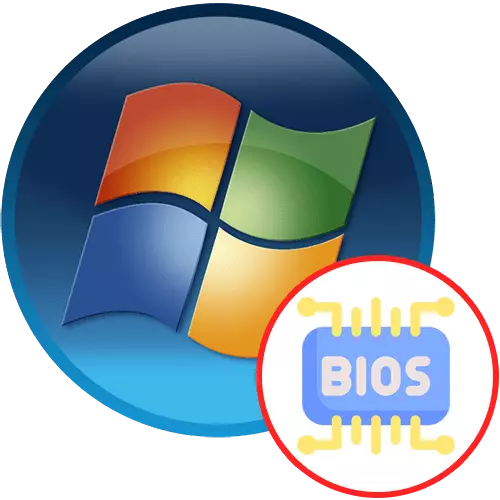
Output options from BIOS
Usually, users do not arise problems with exit from BIOS running any of the versions of the Windows operating system family. However, not everyone understands how to make it right and what ways you can apply. Let's first look at them, and then proceed to solve common problems, if it turns out that, after exiting the BIOS, the computer still loads this microprogram set.Option 1: Options in the "Save & Exit" menu / "Exit"
All BIOS and UEFI have a separate menu designed to save, reboot and output. Move on tabs using the arrow on the keyboard or controlling the mouse (the latter is only available in UEFI). Accordingly, you will need to open "Save & Exit" or "Exit" (the name of this tab is slightly different in different versions of the BIOS).
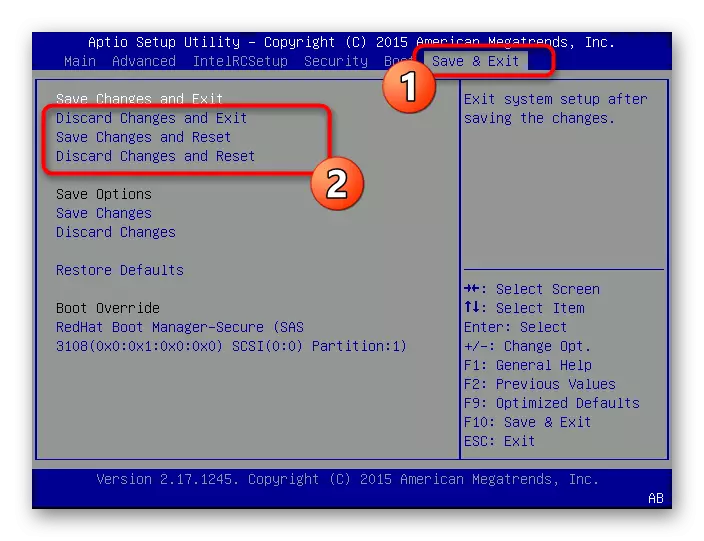
There you will find a number of different actions, to use which you want to activate the string, highlighting using the arrow on the keyboard or moving the cursor. The activation of the option occurs by pressing the ENTER key. You can exit without saving, save and continue downloading or restarting PC. We will analyze the available options whose names, again, will differ depending on which version of the BIOS is installed with you (and some items may not be missing):
- "Save Changes and Exit" ("Exit & Save Changes" / "Exit Saving Changes") - Saving changes made and continued PC loading;
- "DISCARD CHANGES AND EXIT" / EXIT & DISCARD CHANGES / "EXIT DISCARDING CHANGES") - continued PC load without saving changes made;
- "Save Changes and Reset" ("Save Changes and Reboot" - Saving changes made and reboot PC (differs from the first option by applying when editing options requiring full restart system, while "Save Changes and Exit" is used To save the settings that do not require the "clean" computer start);
- "Discard Changes and Reset" ("Save Changes and Reboot" - Restart the PC without saving the changes made.
We will specify that in certain Bios there are only two options - output with the maintenance of new settings and without it (that is, only the lines "Save Changes and Exit" and "Discard Changes and EXIT", without similar items with the words "Reset" / "Reboot" ). At the same time, in both cases, after the output, a computer is rebooted, and not its further loading.
After selecting the option, confirm the action through the notification that appears and wait for or restart.
Option 2: Hot keys
In addition to the described menu with options, the BIOS has the default hotkeys that are responsible for performing basic actions. They are shown at the bottom or on the panel on the right, as demonstrated in the following screenshot.
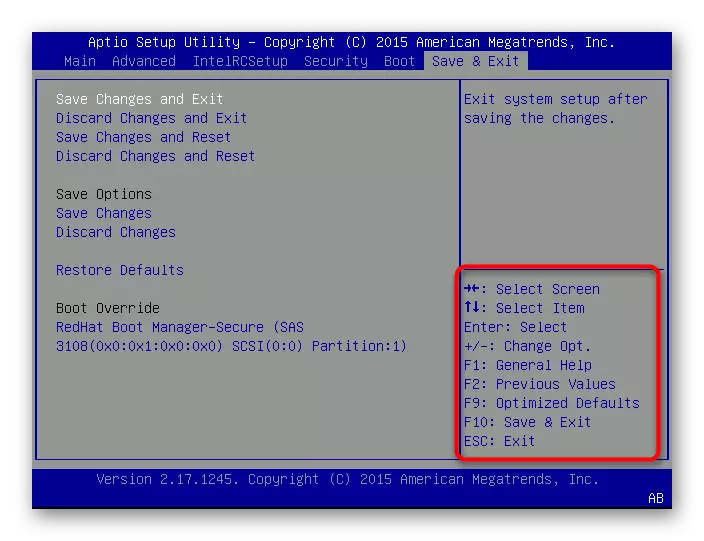
Typically, the F10 key is responsible for the output, and for cancellation of actions and the continuation of the OS load - ESC. Pressing the key will call a notification with a confirmation question ("Y" / "Yes") and cancellation ("N" / "NO") actions, after which it will remain waiting for the operating system boot.
Option 3: Restart Computer
Another possible way out of BIOS is to send a computer to reboot. Just press the POWER button on the system unit or the laptop housing, and not to hold it. In this case, all the changes made are discarded - this must be considered when performing this action.
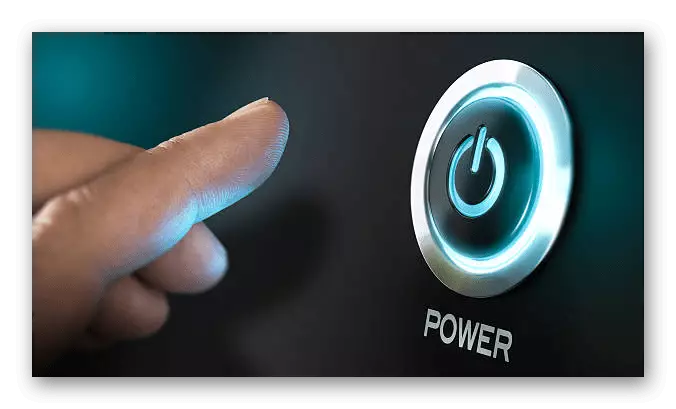
If quickly pressing did not bring the proper result and the computer did not go to the reboot, try to fully complete its operation by holding the button for 10-15 seconds. In the extreme case, pull the power wire from the outlet or turn off the power supply to the power supply.
Option 4: Waiting for a processor temperature drop or video card
When you heated one of the components to the maximum allowable value, the computer automatically turns off for security purposes, and the post-screen or BIOS is displayed. After each reboot, it will open if the temperature is still critical.
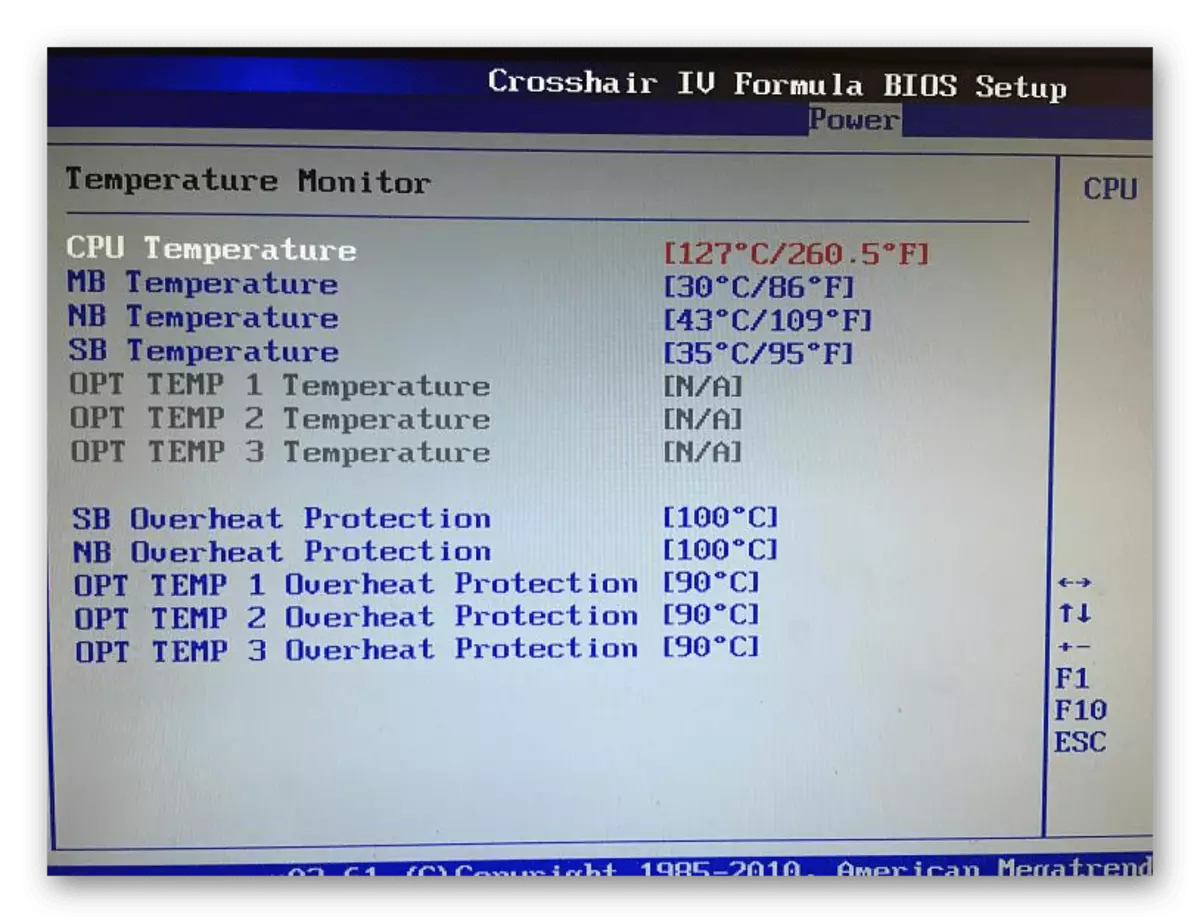
Just turn off the PC and wait at least a few minutes, ideally opening the lid and checking the mount and the work of the coolers. As soon as the temperature regime is restored, download the OS and make sure that now the input into the BIOS does not automatically occur. However, overheating should not be ignored: it is recommended to find a solution to the problem in the near future, with which other articles on our site will help.
Read more:
We solve the processor overheating problem
Eliminate overheating of the video card
We solve the problem with overheating laptop
Option 5: Removing the battery on the motherboard
In one of the methods of solving problems with the exit from BIOS, we will fold the topic of extracting and replacing the batteries on the motherboard, and now we only clarify that it will extract it for a few seconds to solve the firmware in the operation of the firmware, after which you can enable the computer and continue the download in normal mode.

If you get it for a few minutes and reset the PC voltage by closing the POWER button for 10-15 seconds, the BIOS settings are reset and it will boot with standard parameters.
Solving possible problems
Consider the reasons and ways to solve the situation when the computer is immediately loaded into the BIOS and none of the above options helps. We advise you to start with checking the first and easiest, gradually moving to the following.Method 1: Enable Launch CSM mode
Compatibility mode in BIOS or UEFI is designed to start old operating systems and allows you to work most of their functions. WINDOWERS Windows 7 must activate this mode to avoid permanent login in the BIOS due to errors when loading the OS. To do this, first find the "Secure Boot" parameter and disconnect it, and then go out and go to the BIOS. After rebooting, you can enable this mode by finding the "Launch CSM" item.

Note that, depending on the version of the BIOS or UEFI, this menu can be called differently, provoking the need to change additional settings. You will need a parameter called "Boot Device Control" for which you should select the "Legacy and UEFI Only" or "Legacy Only". Sometimes instead of the mentioned names there are designations of operating systems versions, and you choose the one that is installed on the PC used.
Method 2: Hard Disk Check
Automatic input to the BIOS when loading a computer arises in those situations where Windows 7 has not been detected. Then primarily check the hard drive. Make sure it is displayed in the list of connected devices, which you can find out on the "Main" or "Boot" tab. If the disc is not visible, you may need to reconnect the SATA cable. Other cases require changing the priority of downloading or resetting settings to the default state, which will be discussed further.

Method 3: BIOS Reset Settings
It is sometimes easier to reset the BIOS settings and see how the solution will affect the further loading of the operating system. This makes it possible to avoid checking all the parameters on the correctness of their values and solve small failures, if such suddenly arose. There are different ways to bring firmware to the factory state, which the author tells on the reference below.
Read more: Reset BIOS settings
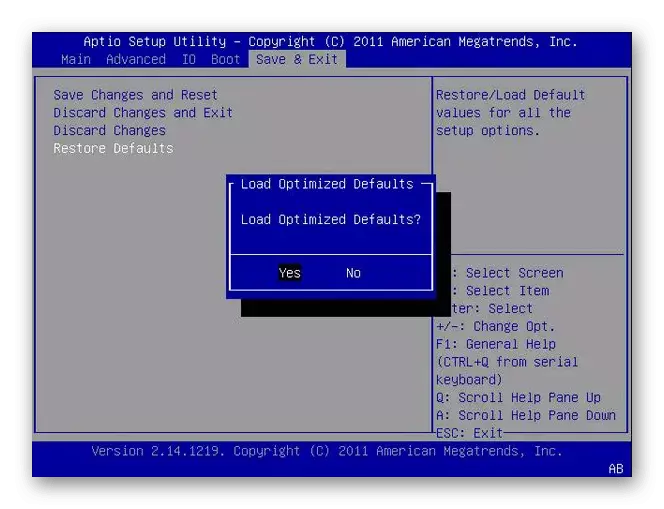
Method 4: Trunking hard disk
Previously, we have already said that the operating system is not found due to problems with the connection of the hard disk, so it is necessary to try to reconnect it. To resort to this method only when nothing of the above did not help. In the case of laptops, such an operation is unlikely to be relevant, since SSD or HDD always sits safely in its connector, but the owners of stationary PCs will need to access the media and check the SATA cable. You can even use another connector as a test by checking how it will affect further download.

Turning off and connecting the hard disk or SSD is made even in hot mode, that is, without pre-shutdown, the PC, but still it is better not to risk and use the instructions from another article to learn about all the intricacies of the completed task.
Read more: Connect hard disk to computer
Method 5: Customize Download Priority
Consider the last action relating to the carrier connected to the PC. Usually, the BIOS is used when loading uses the priority of devices installed in its settings, that is, in turn checks all removable and internal drives. If the hard disk is not in the first place, sometimes there is a problem with its recognition and instead of launching Windows 7 will open the menu with parameters.
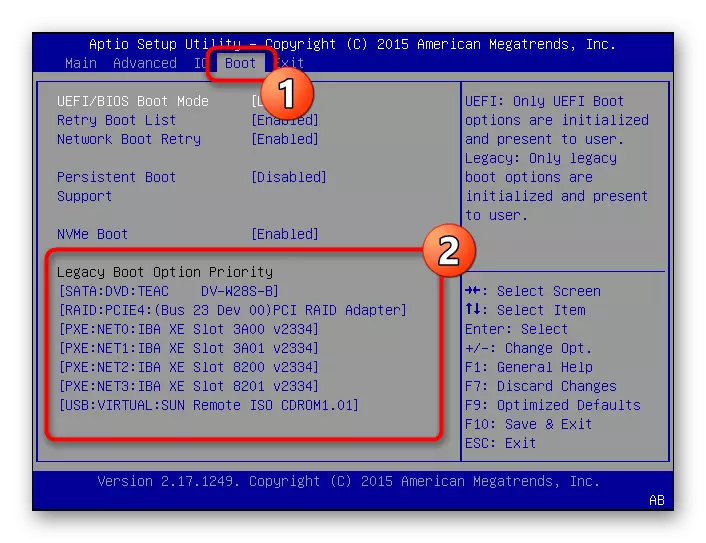
The boot priority is checked on the Boot tab, where you can independently display the sequence of devices using the arrows on the keyboard. It is clear that at the very top there must be a connected hard disk on which the "seven" is installed so that the download immediately began with it. Detailed information about the actions performed can be found in the article below.
Read more: How to make a hard disk boot
Method 6: Replacing the battery on the motherboard
Then we will talk about problems that are less commonly listed, but everything can also be the cause of a permanent transition to the BIOS when the PC is turned on. One of such reasons is the served battery on the motherboard. It is characterized by several different symptoms associated with constant reset of system time and BIOS settings. How to determine the need to replace this component and how to do it, read in our manual.
Read more: The main signs of the seed battery on the motherboard
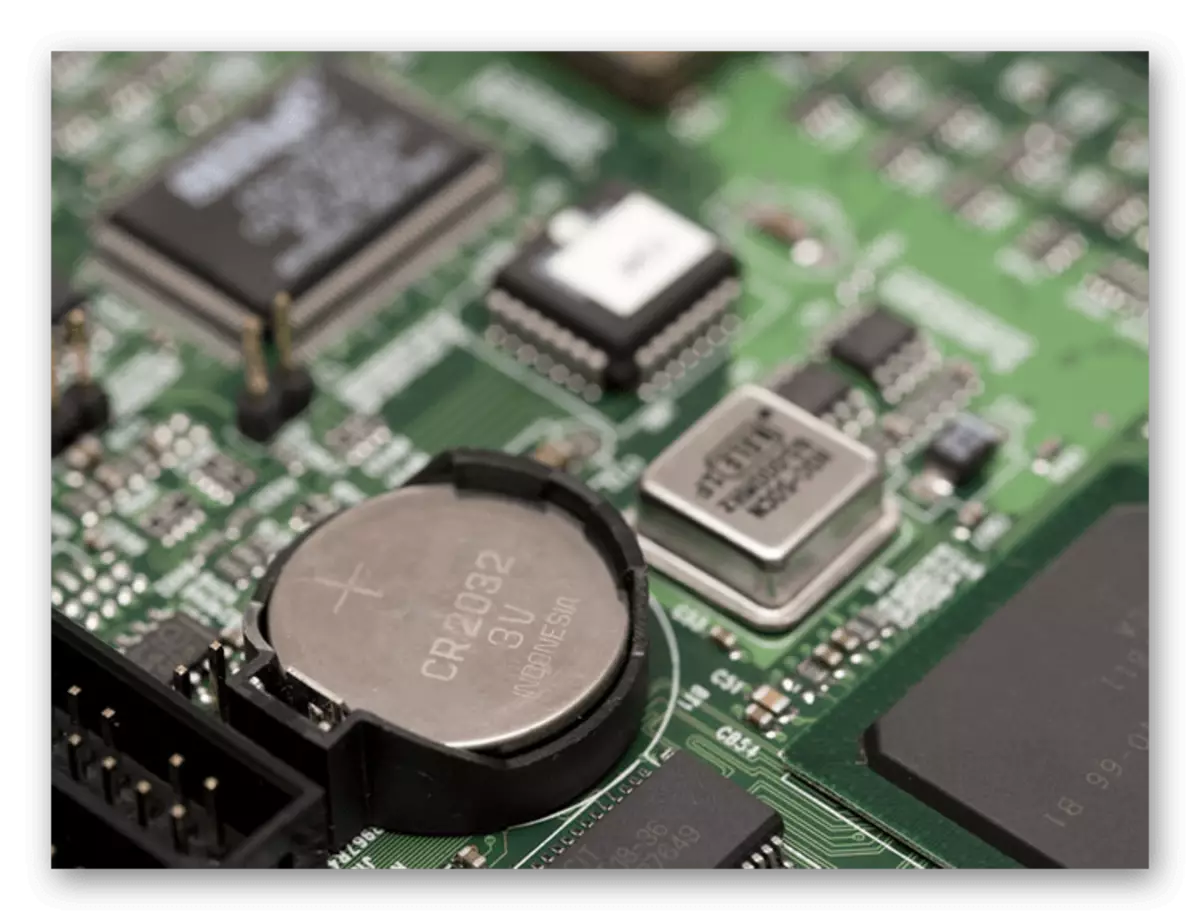
Method 7: Checking Shipping Key
It is known that the transition to the BIOS corresponds to the corresponding keys on the keyboard to which you want to click when the computer is turned on. There is a small probability that the designated key is simply burned and due to this there is a constant transition to the microprogram management. We advise you to check the keyboard for keys and eliminate the trouble, if necessary.
Read more: Solving a problem with sticking keys on a laptop
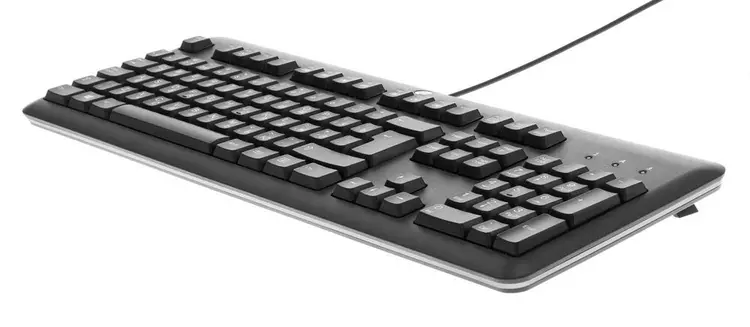
Method 8: BIOS firmware update
Sometimes the BIOS firmware update eliminates different problems associated with the operation of this software component, which also applies to its permanent loading instead of transition to the operating system. It may depend on the revision of the motherboard or other conflicts with components and is usually solved by installing the latest update, which you need to download from the official website of the motherboard manufacturer, using another computer. At the same time, it is necessary to take into account all the features of this procedure, associated with the serial update to the latest version and using a special boot flash drive, which is read further.
Read more: Update BIOS on a computer
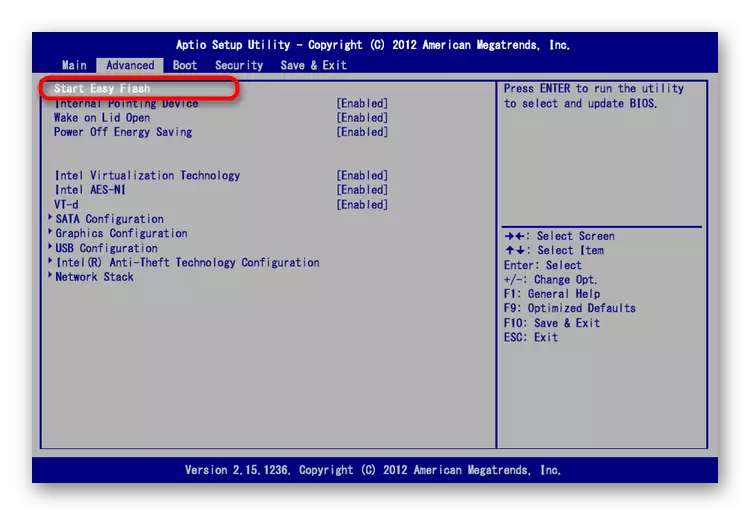
Method 9: Windows boot recovery
The bootloader in Windows 7 is required for the correct start of the operating system, and if its files were damaged or other conflicts happened, for example, after installing the other OS near, problems may experience and an automatic transition to the BIOS may occur. Our other article describes the possible ways to restore the bootloader. Try each of them and check whether it will help to establish a normal launch of Windows.
Read more: Restoring the bootloader in Windows 7

If no recommendation has succeeded, the only output will be reinstaling the operating system. In this case, the hard disk must be correctly displayed and there are no other hardware faults.
